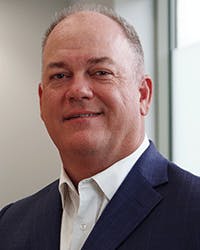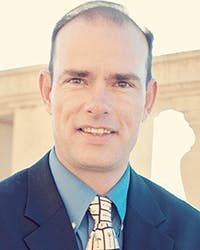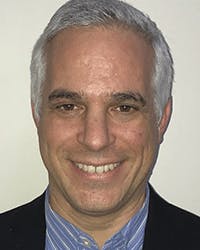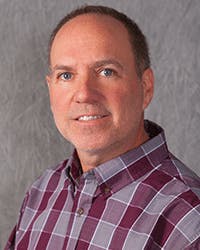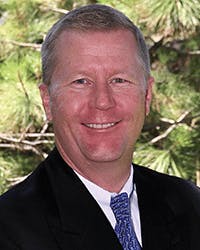Thought Leadership for Today’s Networks.
Did You Know?
A visionary is someone with a strong vision of the future. A visionary’s ideas may either work brilliantly or, if the vision is not accurate, can fail. Even so, visionary is considered to be a positive word. The word is also an adjective; thus, for example, we may speak of a visionary project, a visionary invention, a visionary leader, or a visionary company.
With Merriam-Webster’s definition as our guide, we went in search of professionals who fit the bill. Read the insights of these forward-thinking professionals in this first of a 3-part series.
From Merriam-Webster dictionary:
: of, relating to, or characterized by visions or the power of vision
: having or marked by foresight and imagination
Each participant was asked to answer 3 of the following questions. Read these leaders’ insights and learn.
SMALL CELL GROWTH
In 2015, there were approximately 75,000 outdoor small cell backhaul connections. With the rise in broadband consumption, the market is expected to grow to 960,000 connections by 2019. (https://www.ihs.com/) With this growth trajectory, carriers face numerous challenges in terms of evolving the network. Just a few of those include: the legacy plant, fiber deployment, backup power, and network virtualization. Choose one of those challenges, and share the best and most realistic solution(s) to address it.
VIRTUAL REALITY & NETWORK CHALLENGES
Driven by the high resolution and frame rates required for VR, the technology is likely to require significant bandwidth. In fact, YouTube estimates that each frame of 360˚ video requires 4-5 times the bandwidth of traditional video. Due to the home-based nature of typical VR use cases, alongside speed and latency requirements, this is likely to mean an uptake in Wi-Fi and fixed line broadband provisioning. What does that mean for providers, and how will they solve this bandwidth challenge?
DIGITAL DISRUPTION
Recently, Gartner published a report, "Top Strategic Predictions for 2017 and Beyond: Surviving the Storm Winds of Digital Disruption" (https://www.gartner.com/doc/3142020?plc=ddr). The report forecasts upcoming changes and asks us to think about how they will impact our future. The authors say that the secondary effects of digital disruption will be more impactful than the initial digital change. They state, "We are all familiar with the notion that action leads to reaction. But in digital change, action leads often to an exponential growth in reactions. (Think of Pokeman Go: www.pokemongo.com.) Disruptions cause ripples of change to radiate out and to change other areas. As we see an increase in disruptions, we will see a corresponding increase of secondary effects." Share your opinion about that statement, and what it means for your company and ICT providers.
LEADERSHIP
What is the most valuable leadership lesson you learned early in your career that you’d like to share with ICT professionals today?
NETWORK SECURITY
As custodians of the networks, carriers play a pivotal role in fighting new threats. Customers will begin to expect, then demand, more proactive protection from the entire Internet value chain, and carriers will be expected to support these expectations with a range of technical and operational innovations. How can the desire for greater security become a boon for carriers, if they embrace the need?
VIRTUAL REALITY & NETWORK CHALLENGE
Virtual reality, the Holy Grail for serious gaming enthusiasts, and one of the latest challenges for those charged with providing the bandwidth to make it viable. Many industry experts have attempted to quantify the numbers that predict the network capacity needed to provide a true VR experience. These numbers are, quite frankly, mind-boggling. Clearly, this latest challenge creates bandwidth demand that is orders of magnitude greater than other recent applications.
While projects such as Information-centric networking (ICN) might show promise in helping to address the issue, in the end the problem is one of ensuring enough bandwidth. Today, and well into the future, fiber will be the medium of choice to provide the ever-widening pipes that are necessary to enable more and more sophisticated applications.
DIGITAL DISRUPTION
The exciting thing about digital disruption is that change leads to new opportunity; whether it is new processes, exciting inventions, or a total shift in the existing paradigm. In considering the "ripples radiating out" image, it is not hard to envision that disruptions can, and likely will, occur in ways that may not have been anticipated.
What this means for those that design and build networks is a "widening" of their vision beyond the relatively straightforward task of adding capacity. Instead, the ICT provider must anticipate the impact of their upgrade decisions and seek ways to mitigate any adverse effects before they occur. One way to do this is to involve industry experts, particularly vendors, whose experience in working with many operators may be drawn upon to help with problem anticipation.
LEADERSHIP
Perhaps the greatest lesson I learned early in my career was to lead by example. Everyone has likely encountered a manager that says one thing, yet does another. Those that worked on this leader’s team probably had a high level of distrust, and therefore found it hard to work together towards a common goal.
In the book Extreme Ownership, the former Navy Seal authors provide this spin on the concept: The leader must acknowledge mistakes and admit failures, take ownership of them, and develop a plan to win. In other words, a leader who sets the example by taking ownership for the entire team will be well positioned to adjust plans and lead the group to even greater achievement.
[toggle title=”Biography and Company Profile” load=”hide”]At All Systems Broadband (ASB), an Amphenol Broadband Solutions Company, Mike sets ASB’s technology vision. His organization is responsible for product innovation along with product roadmaps, product management and business development. Mike has over 25 years of telecommunication experience with an outside plant focus. The first 20 years of experience began at Raychem. Previous roles include product development, product management, and sales.
Email: [email protected]
LinkedIn: https://www.linkedin.com/in/michaelgrice
VIRTUAL REALITY & NETWORK CHALLENGES
Virtual Reality, Augmented Reality, and other video sources will continue to be drivers of demand on our network. In fact, since 2007, data usage on our network has grown by 250,000% with video being a significant contributor to this growth in recent years. In fact, more than 60% of the data traffic on our total network was video in 2015.
That’s why we build networks engineered for tremendous volumes of video and data across wired and wireless technologies. The more capacity and speed we build into our networks, the more creatively our customers use them. We also expect 5G technology to help us connect more devices faster, enable lower latency, increase battery life and handle surging video growth.
NETWORK SECURITY
Managing a network of AT&T’s scope and scale gives us unique expertise in security. In fact, AT&T secures more connections than any other communications company in North America. AT&T’s security experts analyze the traffic on our network 24/7/365 to help understand and identify the latest emerging threats to help protect end-users on our network. We see more than 30 billion vulnerability scans and 400 million spam messages across our global IP network every day. We also see 5 billion vulnerability scans and 200,000 malware events targeted specifically at AT&T every day, giving us unparalleled threat data.
Additionally, moving to a software-defined network (SDN) allows us to help maximize responsiveness, efficiency, and provide additional layers of security. Virtualized security functions allow carriers to automatically update security, instead of relying on manual updates and can more rapidly apply security measures in an attack to help limit its impact. SDN also allows us to expand the network to handle additional traffic during an attack. For example, we can boost network capacity during a Distributed Denial of Service (DDoS) attack to help keep things up and running to avoid disturbing operations.
LEADERSHIP
The most valuable lesson passed to me originated from an author/activist and not from a Corporate Leadership guru. Maya Angelou: I’ve learned that people will forget what you said, people will forget what you did, but people will never forget how you made them feel.
As an Operations Leader, the most important element of success, is the engagement of my team. Care for them and they have the space to care for the business.
[toggle title=”Biography and Company Profile” load=”hide”]Claudia provides direct support to AT&T President of Technology Operations. Prior to this role, she led a large team including 1,400+ unionized field technicians that provide U-verse video and broadband services across Texas Southwest. Claudia joined AT&T in 1999 through the Leadership Development Program. During her years of service, she has served in numerous business units including network operations, marketing, and human resources.
*Global coverage claim based on offering discounted voice and data roaming; LTE roaming; and voice roaming in more countries than any other U.S. based carrier. International service required. Coverage not available in all areas. Coverage may vary per country and be limited/restricted in some countries. © 2017 AT&T Intellectual Property. All rights reserved. www.about.att.com[/toggle]
VIRTUAL REALITY & NETWORK CHALLENGES
Regardless of the application, whether it’s virtual reality or higher resolution video, we have all experienced over a decade of exponential customer traffic growth and nothing points to that trend changing. CenturyLink is solving the customer access bandwidth requirements with continued investments in GPON, vectoring and recently, the largest G.fast deployment in North America. It’s also important to stay ahead of the curve in aggregation areas of the network where growth can occur quickly and congestion follow. Content distribution towards the edge will handle a share of that traffic and we now are adding step functions of capacity into the network as we move quickly from 10 Gbps to 100 Gbps and, as CenturyLink has tested, 1 Tbps bandwidth increments.
DIGITAL DISRUPTION
The Pokemon Go explosion shows how hard it is to predict anything other than great minds will continue to find more ways to leverage the network for our customers to enjoy life, work more efficiently, and connect to the world. The pace of innovation is speeding up with each new breakthrough application area, such as augmented reality or the sharing economy where adoption by the mainstream population drives even more disruption as they grow comfortable with the technology. Providers need to be prepared with a network and customer experience that can fulfill and react to those changing needs more rapidly than in the past, which tools like SDN/NFV allow. We will need to continually raise the bar providing the performance, reliability, and security our customers require for that unknown but amazing future.
LEADERSHIP
Push yourself to break through team or departmental silos to work together on the issues facing your company. Often, our nature is to be defensive or prideful which can lead to fighting versus fixing. Successful leaders take the ownership, whether an issue is fully their team’s or not, to rise above and bring different groups together to work for the greater good. Working across teams and taking on those tricky action items is a highly regarded trait in any organization. As Donald McGannon said: Leadership is an action not a position. This quote is such a great reminder that no matter what your role — Engineer, Project Manager, Technician or VP — you can be a leader and bring others together for a common cause, demonstrating actions others will want to emulate.
[toggle title=”Biography and Company Profile” load=”hide”]Kristofer is responsible for the reliability and performance of CenturyLink’s nationwide metro Ethernet networks and broadband infrastructure supporting consumer, business, and wholesale customers. Kristofer has been with CenturyLink for 20 years in various Engineering, Planning, and Operations roles and holds a Bachelor’s degree in Mechanical Engineering from the University of Minnesota and a Master’s in Management from the University of Denver, Daniels College of Business.
SMALL CELL GROWTH
The best thing about the small cell explosion is that the network engineers building these networks have a 2nd mover advantage. Fiber-to-the-Home (FTTH) came on the scene more than a decade ago as the 1st mover using fiber extensively in the physical access network. Since that time, the industry has learned a lot about do’s and don’ts for fiber. When specifying the fiber network, the chance of network failure can be minimized by choosing optical components like splitters and C/DWDM passives that are designed, tested and documented to perform without flaws in extreme climates. Network Engineers need to ensure that the fiber and fiber terminations supplied meet multiple key performance requirements, including insertion loss, return loss, uniformity and operating temperature. Selecting components that are designed to perform in the harsh OSP environment is the key to help future proof the fiber network.
VIRTUAL REALITY & NETWORK CHALLENGES
Traditional broadband can’t keep pace with all of the new apps like VR. The bandwidth requirements have to scale in greater magnitudes. So, a product roadmap with gigabit fiber is only a first step. Fiber networks are the only architectures capable of supporting the low-latency attributes required for real-time interactions. Ultra HD video in 8K requires 85 Mbps per stream. In a peer-to-peer VR multi-player gaming environment, each user requires a connection. For example, 4 multiplayer VR sessions in 8K requires 340 Mbps of VR bandwidth. This is where fiber shines as the obvious choice enabling the network to meet the VR challenges.
DIGITAL DISRUPTION
As I walked the show floor at CES in Las Vegas this year, one of the most notable things I observed was the increase in voice recognition software. Toolkits for Amazon Echo that were launched the previous year were in literally hundreds of products on display. By 2020, 30% of web browsing sessions will be done without a screen. I’ve already seen firsthand how voice recognition can bridge a digital divide among elderly who are averse to laptops but who now routinely pick up their phone, press a button, and say "Okay Google, find …." I guarantee the inventors of voice recognition never imagined how it could change the lives of the elderly.
[toggle title=”Biography and Company Profile” load=”hide”]Kevin has vast experience in communications technology, fiber optic systems, and business product marketing. He began his career at BellSouth (now AT&T) leading product evaluations of broadband technologies, and also led product management and marketing efforts at ADTRAN for 20 years. He is well known in the industry for his leadership at the FTTH Council. Morgan holds a Bachelor’s in Electrical Engineering (Auburn) and an MBA (Alabama).
Email: [email protected]
Twitter: https://twitter.com/kevinmorgan520
SMALL CELL GROWTH
Fiber deployment will prove to be among one of the most challenging issues for many providers to meet
backhaul demand, especially for those carriers that are requiring joint use attachments on power or other carriers’ pole lines. This has proven to be a deployment challenge industry-wide, for meeting deadlines, and growing demand. Companies should be willing to explore alternative, capital-consuming underground placement of scalable fiber facilities and accommodating structure, potentially allowing for additional revenue stream of data services beyond the small cell.
DIGITAL DISRUPTION
There is no question: disruptions and secondary effects should be anticipated. IoTs and smart home technology are going to change consumers’ behaviors as time passes. I wonder how many times Amazon has tried to deliver a box of cookies to someone’s house because we told Alexa we really wanted some cookies when we were home alone? Secondary effect. These devices are going to become more common throughout the consumer world, at home, in the workplace, etc., and as these applications and IoT devices continue to develop, ICT providers should be thinking about how to support them (scalability, reliability), in addition to network security concerns, as these technologies continue to overlap their use of the network, and the information they share.
LEADERSHIP
Open communication — hands down. Oftentimes we silo ourselves into what we do, or our department, or teams, etc., and it is a detrimental practice to get into. I truly believe that if you’re given the opportunity to speak to someone outside of your process, be it an internal or external customer, you need to take it. More often than not, you will gain a sense of understanding and learn something — and likely, you will share knowledge that someone will be happy to gain. Be willing to answer questions of those that support the business at all levels, after all, it takes a lot of hands to steer the business in the right direction, and we all play an important role.
[toggle title=”Biography and Company Profile” load=”hide”]Sean Flora oversees the OSP construction build initiatives including GPON, VDSL, and Ethernet fiber builds. His team supports Sales, PMO, Engineering, and Construction departments to work together to overcome inevitable obstacles, and keep projects on track. Sean has a diverse background, working across a variety of areas of the Company, and uses this to coach and guide his team to drive success for the Company, employees and customers.
Email: [email protected]
LinkedIn: https://www.linkedin.com/in/sean-flora-cfot-itil-54675586
SMALL CELL GROWTH
One of my mantras is that a lot of small network devices are more powerful than a single large network device. This has been proven many times during the 20 years I have been in this industry. Small cells are another example of proving this same mantra as the truth. The benefit with small cells is redundancy, bandwidth management, and power consumption. The power consumption is interesting considering that it takes significantly less power with a small cell. Along with the shrinking of the cell itself, it decreases the size of the UPS required to power this during emergency times. Small Cells are a green technology that allows these to be powered with solar or wind.
VIRTUAL REALITY & NETWORK CHALLENGES
VR technology hasn’t hit mainstream yet but if it does, your PON network won’t be able to keep up. Those customers who have chosen a point-to-point network have future-proofed their network as much as possible with today’s technology. In my opinion, PON networks are equivalent to the old party line system that had multiple subscribers on a single pair. As communication requirements evolved, we did away with party line systems to go point-to-point in the network. This evolution will happen again. The only item holding us back from turning a PON network into an active PTP network, is the power at the PON splitter location. Active-E reduces the complexity of adding the 33rd customer that is challenging in a PON network. PON requires you to manage ports in addition to bandwidth yet an Active-E network allows you to manage the bandwidth instead of subscriber ports without increasing the number of uplink fibers. Over time, we will see green technologies such as solar and wind that will provide power to the location that contains the PON splitter today. This will allow you to turn it into an Active-E network to increase bandwidth while also reducing the complications of a PON network.
LEADERSHIP
Be positive! Think positively, speak positively, and act positively! I’m simply amazed at the power of a positive attitude. That positive attitude will be reflected in other employees and customers. One of my favorite quotes is from Henry Ford: Whether you think you can, or you think you can’t — you’re right. It’s impossible to do something you think you can’t!
[toggle title=”Biography and Company Profile” load=”hide”]Chris has more than 20 years of telecom engineering experience, and has a passion for powering things. He was instrumental with one of the very first IPTV-over-copper deployments in the US. He was also the 1st MEF CECP engineer in Oklahoma. He holds multiple patents and continues to create innovative ways to power network devices, including the award-winning Voltar solar UPS. He lives in Stillwater, Oklahoma, with his wife Paige and two Westies.
Email: [email protected]
Tel: 806.282.1363
SMALL CELL GROWTH
It is impractical to simply continue expanding fiber infrastructure using existing technologies given the exponential growth trajectory facing carriers. A more innovative approach to fiber connectivity, such as high density fiber management with creative integrated optical solutions is needed.
We approach Small Cell within the context of broader 5G solution offerings. Fiber connectivity both in terms of backhaul and fronthaul is center stage when planning and rolling out 5G services. We believe an application-aware Fiber Management Platform is needed to support distributed fiber management approaches where the number of connections/splices per fiber channel is reduced. This Platform must also fit within the same frame as that of the 5G active equipment.
VIRTUAL REALITY & NETWORK CHALLENGES
VR applications are poised to become the most bandwidth intensive applications facing broadband network operators. Coupled with growing consumer demand for 4K video content this will put incredible demands on carriers to rethink their overall network architecture. Combining both wireline and fixed wireless technologies. Not only will the network need a bigger pipe, but it must be a smarter infrastructure which leverages a software defined network with a more agile capability.
DIGITAL DISRUPTION
Digital disruption is changing the way we live. Similar to the transition from the Agrarian Society to Industrial Society, we are in the initial phase of another profound transition in human history.
The digital disruption direct result is the increased bandwidth usage and demand. To accommodate this increase we need additional fiber to the home, enterprises, and pedestals. The fiber to pedestals will be used to support LTE-based fixed wireless within neighborhoods.
If we look at technology evolution over the past 20+ years, we notice that:
• There has been continued innovation and improvements in active equipment (e.g., Moore’s law, virtualizations).
• There have been major advances in Fiber Optics Cable technologies, such as bend insensitive fiber, dry fiber, and micro cables.
• However, there has been very limited (if any) innovation and advances in Fiber Management Connectivity. In essence, we have continued to use the same set of capabilities for the past 20+ years.
At Go!Foton, our patented spreadable fixture fiber management platform remedies this issue and puts an end to the asymmetric technology evolution that has been holding service providers back from realizing their full financial and technical goals.
[toggle title=”Biography and Company Profile” load=”hide”]Michael is responsible for the Connectivity Business Unit. Although an engineer by training, Michael is an accomplished global business development and telecom management executive with a perspective for identifying and growing strategic business opportunities. Most recently, Michael was Managing Director of the Network & Product Integrity Group at Telcordia Technologies.
Email: [email protected]
LinkedIn: https://www.linkedin.com/in/michael-zammit-2183812
DIGITAL DISRUPTION
Does your business have the ability to thrive in the
digital disruption? Ask yourself:
Do you have the right leaders? Creative, innovative, and nimble leadership is paramount to success. People want to work for thought leaders, motivators, and visionaries. Legacy employees who can’t adapt won’t survive the disruption.
Do you have the right culture? Embrace cross functional teamwork and spontaneity. Provide an office environment that fosters creativity teamwork. Have a plan that addresses the short duration employment issues of millennials.
Do you have the right tools? Computing centers will grow from a relatively few number of concentrated sites to thousands of widely dispersed nodes, moving computing and content closer to your customers. New tools and processes are needed to manage these assets and the new services that will be deployed on them.
SMALL CELL GROWTH
Carriers are expected to deploy thousands of small cells in 2017 to cater to increasing bandwidth and coverage requirements placed on the network by the exponential increase in usage. Short time to market strategies are crucial in small cell deployment. We implement end-to-end solutions that includes assembly and testing prior to field installation, allowing carriers to be more efficient in small cell deployments and troubleshoot and resolve any issues prior to deployment. This methodology will increase ROI by more tightly managing costs, timelines, resource utilization, inventory and quality control.
LEADERSHIP
As leaders, we often say The customer is everything. We go above and beyond in serving our customers. We put ourselves in the shoes of our customers. Our customers expect us to be brilliant at the basics. This means flawless daily operations and always striving to over-deliver. And, in the rare instance when we have not met our highest level of service, we stop at nothing to make it right for our customer. This is the tip of the iceberg.
I have learned that relationships matter. All of them. Impactful leadership understands the importance of great relationships! We talk about them, we excel at building them, we value them. It begins with a positive employee experience for coworkers and leaders. We characterize our work force by respect, trust, kindness, forgiveness, and inspiration. Leaders connect with employees to teach and develop, and do it with humility. This positive employee experience is the foundation and leads to similar experiences and relationships with our customers and suppliers — our trusted partners.
[toggle title=”Biography and Company Profile” load=”hide”]Paul focuses on the Telco, Cloud, and Virtualization partner ecosystem. He is tasked to lead sales, strategy, and long-term planning for growth for KGP Companies as customers transition to the Cloud and virtualized environment. Paul brings 31 years of experience and leadership in the Telecom sector in sales and operations. Preceding KPG, Paul held various positions at TE Connectivity, and at BellSouth Telecommunications in the IT and Network organizations.
VIRTUAL REALITY & NETWORK CHALLENGES
TDS Telecom delivers broadband services to nearly 900 rural, suburban, and metropolitan communities. To meet our customers growing demand for streaming services, including YouTube, TDS offers a variety of products and services including: 1Gig Internet service, IPTV (TDS TV), cable TV, and traditional wireline services. Where we see challenges are in many of the smaller, more rural areas we serve. In these areas, TDS has legacy infrastructure – primarily copper-based plant. In order to deliver more bandwidth, TDS is leveraging technology advancements (e.g., VDSL, bonded copper, Vectoring, and extending fiber closer to the home) to increase bandwidth. We are leveraging state and federal grants, wherever possible, to deploy fiber deeper than ever before.
NETWORK SECURITY
Security is of utmost importance. Without ensuring a safe network, the overall utilization of our network is at risk. Today, as the Internet seems to have become perhaps the greatest consumer need (surpassing many other essential items in today’s environment) we must focus on safeguarding our network. By focusing on protecting our network, customers are the inherent beneficiary. We go to great measures to eliminate any vulnerability, as quickly as possible. When they are identified, we react quickly, share openly with strategic partners, and block unwanted exploits to our networks. Our operations are driven by data, trends, and reports that monitor anomalies resulting in a safe and reliable experience for our customers.
LEADERSHIP
Perhaps one of the most valuable lessons came during a performance review nearly 20 years ago. The phrase effort does not matter, results do was shared during the discussion. This message, while difficult to hear, introduced me to a powerful leadership tool known as goal setting. It really was a message about working smarter, not harder, and placed emphasis on working on the things that truly matter. It is not uncommon to see teams or individuals get assignments that seem impossible, and watch them dwell and often fail before even starting the process. Whether personal or professional, I cannot think of a situation where goal setting does not apply.
My advice: when the impossible task presents itself, embrace the challenge and break it down into manageable steps. Write down specifically what you will do, by when, and your chance at success is significantly improved. Be sure to measure your progress and make adjustments. If you find yourself saying someday I will, it is likely you will not.
[toggle title=”Biography and Company Profile” load=”hide”]Bob Perkins, Regional Manager of Field Services, TDS Telecom, has nearly 35 years of experience in the telecommunications industry. In his current role, Bob oversees ILEC, CLEC, and cable operations for TDS Telecom’s Western Region. He started in the business as a technician in the US Air Force and holds a bachelor’s degree in Business Administration. Bob joined TDS in 1994. When not at work Bob spends time with his wife of 33 years and their 2 daughters (or bass fishing). Bob is passionate about the environment, and leads efforts focused on water quality and appropriate land use.
Email: [email protected]
Design & PlanningVerizon
SMALL CELL GROWTH
Densification using small cell technology is a proven method to offload macro sites that are built for coverage. When engineered correctly, the two complement each other very well and provide a better customer experience by allowing higher throughput and accommodating more simultaneous users. One of the challenges, however, is additional wireline connectivity because there simply is no substitute for fiber. Fortunately, Verizon has one of the largest fiber networks with plans to continue expanding it in the US to support small cell growth for things like 5G that require even higher antenna placement density. The good news is that small cell deployment is only required in dense urban areas where fiber infrastructure and switching centers are already prevalent.
DIGITAL DISRUPTION
Small changes in the digital world can have dramatic impacts and they will not always be predictable. Future networks will need to be scalable and flexible to handle un-forecasted demand but with sufficient automation to avoid manual intervention every time changes are required. More bandwidth, however, is not the only tool required to stay ahead of the curve. Network providers will also need to employ caching and localized data processing in a seamless fashion to avoid unnecessary duplication or massive file transfers, especially across the long distance core where the cost per bit is the highest. Basically, we need to use the same sophisticated programing and computing resources that created the "digital disruption" to help us deal with it!
LEADERSHIP
When your boss sends you a question, he wants an answer, not a dissertation, and that answer should be in the first sentence. If additional explanation is needed, put it in a separate paragraph.
[toggle title=”Biography and Company Profile” load=”hide”]Glenn Wellbrock is responsible for the development and deployment of new technologies for both the metro and long haul transport infrastructure. A well-respected presenter on optical technology, Wellbrock holds numerous patents in optical technology and is considered an expert in the field. Prior to his current position, Wellbrock ran the advanced technology lab, established evaluation criteria, and set engineering guidelines for all backbone transport equipment. He has more than 20 years at Verizon.
DIGITAL DISRUPTION
Timely innovation becomes a foremost challenge as product development must have a relatively short cycle for implementation and adoption before consumers move on to the next "thing." As Gartner predicts, by 2019, 20% of brands will abandon their mobile apps. This demonstrates that nearly flawless execution and ease of use becomes paramount to success as perception continues to drive consumer adoption or abandonment. To execute nearly flawlessly means investing in core processes and tools, per Gartner again, at a ratio $7 for every $1 spent innovating. At the same time, intense competition requires carriers to capture twice as many customers or services for the same dollar earned only a few years ago. In turn, further cost compression of plant upgrades means not just supplier cost compression but making the innovative choices about plant investment via predictive analytics fed by the data output of increasingly intelligent infrastructure.
NETWORK SECURITY
Security used to be layered on top of the communications services carriers provided and has evolved to an expectation of minimum security needs. Security isn’t just about intrusion detection and prevention but is increasingly a component of service availability and business continuity. Customers, particularly in the mid-enterprise space, increasingly seek a single source for the portfolio of services they need. That means we need to not only get better at educating and guiding customers, but at supporting them in a consultative way that helps them manage their risk as their business evolves.
LEADERSHIP
Above all else, ask and listen. I remember an experience as a young engineer in the oil and gas industry. There was a crusty old inspector who, during design reviews, would often point out problems with the plans that I and my more experienced and credentialed colleagues had created. Early on, his suggestions were often rebuffed. Crusty started as a welder’s helper when he was a teenager, and had nearly 50 years of operating experience under his belt when I met him. Invariably, Crusty’s experience held true and sure enough, field modifications were required in some cases. I soon learned to seek his and others’ feedback on my plans, and it made me better. In my nearly 20 years in telecom, the same holds true. Asking, and listening to, those experienced individuals who are closest to the work still steers me true today.
[toggle title=”Biography and Company Profile” load=”hide”]Karl-Arne "K-A" Hegewald has 17 years telecommunications experience, and supports the power and environmental engineering teams, the colocation engineering team, and the colocation coordination team, at Windstream. Prior to joining Windstream, he supported strategic planning, transport engineering, and engineering project management teams at one of the big 3 carriers.
Email: [email protected]
URL: www.windstream.com
Save
Save
Save
Save
Save
Save
Save
Save
Save
Save
Save
Save
Save
Save
Save
Save
Save
Save
Save
Save
Save
Save







